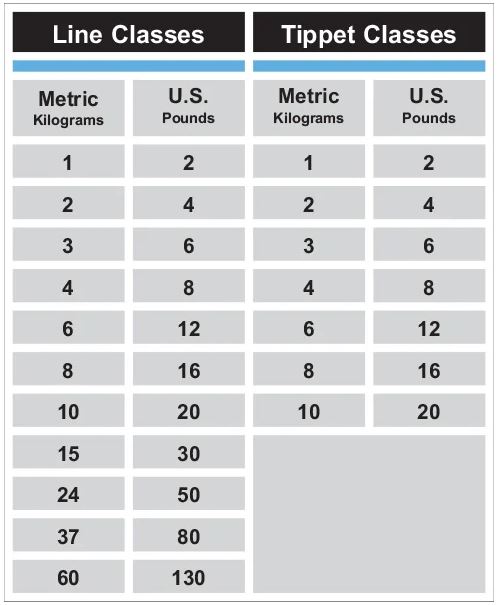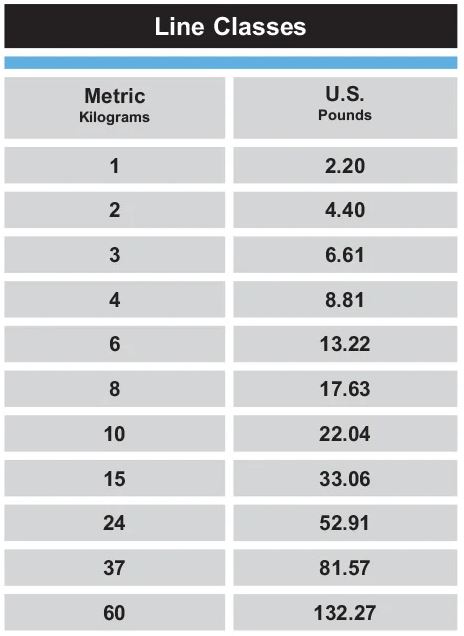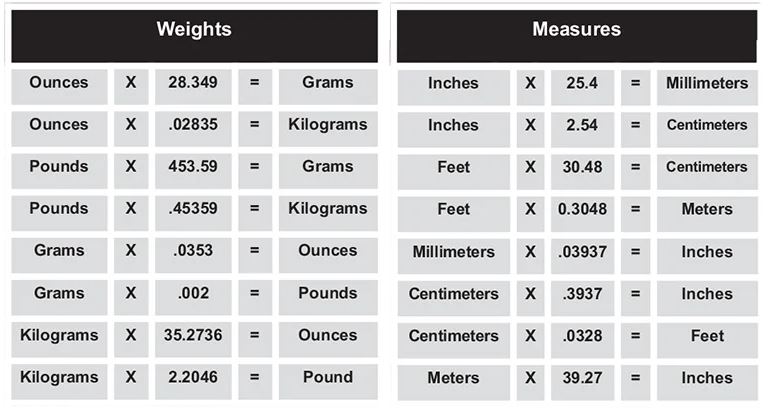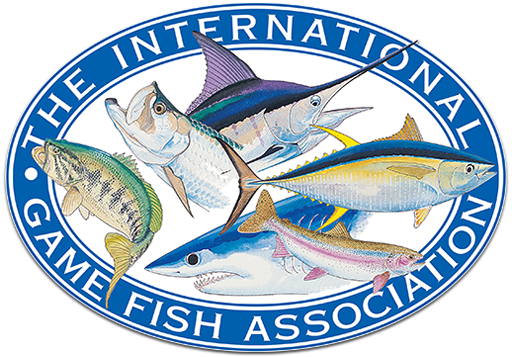As you may know, Release Boatworks is the founding member of the Boat Builders For Billfish Coalition which supports the International Gamefish Association (IGFA).
In the sportfishing industry, it is an elite honor to have an IGFA World Record in the books, but it is definitely not easy. Not only is finding a world record fish a lifetime goal that takes research, experience, preparation, and perseverance, but if you don’t know the requirements for properly documenting it, you could be in for a load of heartbreak.
Here are the IGFA World Record Requirements as of July 2020.
Game fish catches can only be considered for world record status if they are caught according to the IGFA International Angling Rules. Following is information on world record categories, requirements and procedures for filing claims. All materials submitted as part of the application process become the property of IGFA.
World Record Categories
General Information
IGFA maintains world records for both freshwater and
saltwater game fish in All-Tackle, All-Tackle Length, Line Class, Tippet Class
and Junior and Smallfry categories. In order to qualify for a record, a catch
must be a minimum of .453 kilograms (1 pound) in weight, and must outweigh the
existing record by the required amount or meet the minimum weight requirement
for vacant records.
No applications will be accepted for fish caught in hatchery waters,
sanctuaries or small bodies of water that are stocked with fish for commercial
purposes. The intent of this rule shall prevail and IGFA retains the right to
determine its applicability on a case-by-case basis. The catch must not be at
variance with any laws or regulations governing the species or the waters in
which it was caught.
When an additional species of game fish is made eligible for IGFA All-Tackle
Length, Line Class, Tippet Class, Junior or Smallfry world records, the
effective date will be announced by the IGFA. Fish caught on or after the
effective date will be eligible for records. Announcement of an additional
species in the World Record Game Fishes book or in other IGFA
communications will be considered proper notification in lieu of any other
notice.
If an angler submits more than one application for the same record, caught on
the same day, only the heaviest or longest of the fish will be accepted.
All-Tackle
All-Tackle World Records are kept for the heaviest fish of a
species caught by an angler in any Line Class up to 60 kilograms (130 pounds).
All-Tackle record claims are considered for all species of fish caught
according to the IGFA International Angling Rules.
Applications for All-Tackle species not currently included in the IGFA Line
Class and Tippet Class listings must meet the following criteria:
1. The fish must represent a valid species with a recognized scientific name.
2. The fish must be identifiable based on photos and other supporting data
presented with the application.
3. The fish must be considered “trophy-sized.” A rule of thumb is that the
weight must fall within the top half of the maximum reported weight for the
species. If no maximum weight is available, it must fall within the top half of
the maximum reported length for the species. Maximum reported weight and length
for species may be found at www.fishbase.org or from other reputable sources.
All-Tackle Length
All-Tackle Length World Records are kept for the longest fish of each eligible species caught according to the IGFA International Angling Rules in any Line Class up to 60 kilograms (130 pounds) and released alive.
Junior
Junior World Records are kept for the heaviest fish of each eligible species in any Line Class up to 60 kilograms (130 pounds). Junior records are kept for both male and female anglers ages 11-16. All species recognized for Line Class records and Tippet Class records are also recognized for Junior records. All IGFA International Angling Rules apply, with the exception that fish do not have to be weighed on land.
Smallfry
Smallfry World Records are kept for the heaviest fish of each eligible species in any Line Class up to 60 kilograms (130 pounds). Smallfry records are kept for both male and female anglers ages 10 and under. All species recognized for Line Class records and Tippet Class records are also recognized for Smallfry records. All IGFA International Angling Rules apply, with the exception that fish do not have to be weighed on land.
Line Class
Line Class world records are kept for each eligible species according to the breaking strength of the first 5 meters (16.5 feet) of line directly preceding the double line, leader or hook. This section must be comprised of a single, homogeneous piece of line. For all Line Class records, the weight of the fish must be at least ½ of the Line Class used to make the catch.
Tippet Class
Tippet Class world records are kept for the eligible species
according to the breaking strength of the class tippet. For all Tippet Class
records, the weight of the fish must be at least ½ of the Tippet Class used to
make the catch.
World records are kept in the following Line and Tippet classes:

Line Testing
The IGFA tests all line and tippet samples submitted with world record claims using the metric system, which varies slightly from the imperial measurement system. For example, the imperial measurement system equivalent of 4 kilograms is 8.81 pounds. Thus, line designated by the manufacturer as 8-pound class line may test up to 8.81 pounds (4 kilograms) to qualify for a 4-kilogram (8-pound) Line Class world record. The imperial measurement system equivalents in pounds for the metric Line Classes are as follows:

Line and tippet samples submitted with record claims are
uniformly tested in accordance with IGFA protocols.
Note: IGFA offers a line and tippet testing service for IGFA members at a fee
of $30 USD per sample.
Record Catch Regulations
General Information
1. Protested applications or disputed existing records will
be referred to the IGFA Rules Committee for review. Rules Committee decisions
may be appealed to the IGFA Board of Trustees. IGFA reserves the right to
refuse to consider an application or grant a claim for a record application.
All IGFA decisions will be based upon the intent of the regulations.
2. Any and all claims and/or disputes regarding the IGFA International Angling
Rules shall be governed by and construed and enforced in accordance with the
laws of the State of Florida without regard to such jurisdiction’s conflict of
laws principles. In the event that parties are unable to mutually resolve any
dispute, controversy or claim arising out of, in connection with, or in
relation to the IGFA International Angling Rules, such dispute, controversy or
claim shall be resolved by litigation; in that connection, each of the parties
to such dispute hereby
(i) irrevocably and unconditionally consents to submit itself to the sole and
exclusive personal jurisdiction of any federal or state court located within
Broward County, Florida (the “Applicable Courts”),
(ii) waives any objection to the laying of sole and exclusive venue of any such
litigation in any of the Applicable Courts,
(iii) agrees not to plead or claim in any such court that such litigation
brought therein has been brought in an inconvenient forum and agrees not to
otherwise attempt to deny or defeat such personal jurisdiction or venue by
motion or other request for leave from any such court, and
(iv) agrees that it will not bring any action, suit, or proceeding in
connection with any dispute, claim or controversy arising out of or relating to
the Angling Rules in any court or other tribunal other than any of the
Applicable Courts. Nothing in this Section shall prevent enforcement in another
forum of any judgment obtained in the Applicable Courts.
In the event that it shall become necessary for any party to take action of any
type whatsoever to enforce the terms of the IGFA International Angling Rules,
the prevailing Party shall be entitled to recover all its costs, including
attorneys’ fees, costs, and expenses, including all out-of-pocket expenses that
are not taxable as costs, incurred in connection with any such action,
including any negotiations, mediations, arbitrations, litigation, and appeal.
3. The IGFA will not recognize or approve any IGFA World Record application
where a financial award is offered for obtaining the record.
4. In some instances, an IGFA officer, IGFA representative or a representative
from a local IGFA member club may be asked to re-check information supplied on
a record application. Such action is not to be regarded as doubt of the formal
affidavit, but rather as evidence of the extreme care with which IGFA
investigates and maintains its records.
Species Identification
1. Photographs must be submitted by which positive
identification of the exact species can be made. Read the photographic
requirements at the end of this section. Applications without photographs will
not be accepted.
2. If there is the slightest doubt that the fish cannot be properly identified
from the photographs and other data submitted, the fish should be examined by
an ichthyologist or qualified fishery biologist before a record application is
submitted to IGFA. The scientist’s signature, title and qualifications should
appear on the IGFA record application form or on a separate document confirming
the identification of the species.
3. If a scientist is not available, the fish should be retained in a preserved
or frozen condition until a qualified authority can verify the species or until
notified by IGFA that the fish no longer needs to be retained.
4. If no decision can be made from the photographs and the angler can provide
no further proof of the identification of the species, the record claim will
not be considered.
Witnesses to Catch
On all record claims, witnesses to the catch are highly desirable. It is important that the witnesses can attest to the angler’s compliance with the IGFA International Angling Rules and Equipment Regulations.
Minimum Weight Requirements
For all Line Class and Tippet Class categories, the catch must weigh at least ½ as much as the Line Class or Tippet Class. For example, a fish entered for the 6-kilogram (12-pound) Line Class or Tippet Class category must weigh a minimum of 2.72 kilograms (6 pounds).
Weights needed to defeat or tie existing record
1. To replace a record for a fish weighing less than 11.33
kilograms (25 pounds), the replacement must weigh at least 56.69 grams (2
ounces) more than the existing record.
2. To replace a record for a fish weighing 11.33 kilograms (25 pounds) or more,
the replacement must weigh at least one half of one percent more than the
existing record. For an existing record weighing 45.35 kilograms (100 pounds),
the additional weight required to defeat the record would be 226.7 grams (8
ounces).
3. A catch that matches the weight of an existing record or exceeds the weight
by less than the amount required to defeat the record will be considered a tie.
In the case of a tie claim involving more than two catches, the weight must be
compared with the original record (i.e., the first fish caught). No catch
weighing less than the original record will be considered.
Time Limits on Claims
With the exception of All-Tackle World Records, claims for record fish caught in U.S. continental waters must be received by IGFA within 60 days of the date of catch. Claims for record fish caught in other waters must be received by IGFA within 90 days of the date of catch.
Weighing Requirements
1. All fish submitted for record consideration must be
weighed on scales that have been certified for accuracy by government agencies
or other qualified and accredited organizations within the past 12 months.
Disinterested witnesses to the weight should be used whenever possible. If at
the time of weighing the fish the scale has not been properly certified within
the past twelve months, it must be checked and certified for accuracy as
quickly as possible, and an official report stating the findings of the
inspection prior to any adjustment of the scale must be included with the
record application.
2. The weight of the sling, platform or rope (if one is used to secure the fish
on the scales) must be determined and deducted from the total weight.
3. No estimated weights will be accepted. With the exception of Junior and
Smallfry records, fish must be weighed on land.
4. Only weights indicated by the graduations on the scale will be accepted.
Visual fractionalizing of these graduations is not allowed. Any weights that
fall between two graduations on the scale must be rounded to the lower of the
two.
5. IGFA reserves the right to require any scale to be re-certified for accuracy
if there are any indications that the scale might not have weighed correctly.
Note: IGFA offers a scale certification service for IGFA members at a fee of
$40 USD.
Preparation of Claims
To apply for a world record, the angler must submit a
complete IGFA application form, the mandatory length of line and terminal
tackle (described below) used to catch the fish, and acceptable photographs of
the fish, the rod and reel used to catch the fish, the scale used to weigh the
fish, and the angler with the fish.
Application Form
A current, official IGFA world record application form must be used for record
claims. This form may be found on the www.igfa.org website or in the 2019 World
Record Game Fishes book. No other version of the application form will be
accepted.
When making any record claim, the angler must indicate the specified strength
of the line or tippet used to catch the fish. In the cases of Line Class and
Tippet Class records, this will place the claim in an IGFA Line or Tippet Class
category (see Line Class and Tippet Class categories). All lines and tippets
will be examined by IGFA to verify the specified strength of the line. If the
line or tippet over tests its class, the application will be considered in the
next highest class. If the line or tippet under tests into a lower Line or
Tippet Class, the application will not be considered for the lower Line Class
or Tippet Class. The heaviest Line Class permitted for both freshwater and
saltwater records is 60 kilograms (130 pounds). The heaviest Tippet Class
permitted for Tippet Class records is 10 kilograms (20 pounds). If the line or
tippet over tests these maximum strengths, the claim will be denied.
Extreme care should be exercised in measuring the fish, as the measurements are
often important for weight verification and scientific studies. See the
measurement diagram on the record application to be sure the fish is measured correctly.
The angler is responsible for obtaining the necessary signatures and correct
addresses of the boat captain (where applicable), weighmaster (where
applicable) and witnesses on the application. If an IGFA officer or
representative, or an officer or member of an IGFA club is available, he or she
should be asked to witness the claim. The angler must appear in person before a
qualified authority to have an application notarized. In locations where
notarization is not possible or customary, the signature of a government
official, a member of an embassy, legation or consular staff or an IGFA officer
or representative may replace notarization. Applications delivered to the IGFA
Headquarters in person do not require notarization.
Any deliberate falsification of an application will disqualify the applicant
for any future IGFA World Record and any existing records will be nullified.
Line or Tippet Sample
All applications caught on fly fishing tackle must be
accompanied by the fly, the entire tippet and the entire leader connected in
one piece.
All applications caught on conventional tackle must be accompanied by the
entire leader (including the hook(s)), the double line and at least 5 meters
(16.5 feet) closest to the double line, leader or hook. All line samples and
the leader (if one is used) are to be submitted in one piece. Broken or
incomplete line samples must be accompanied by a full explanation. The IGFA
reserves the right to reject applications with broken line samples that prevent
it from testing the breaking strength and/or verifying the length of the double
line and leader. If a lure is used with the leader, the leader should be cut at
the eye attachment to the lure. Each line sample must be submitted in a manner
that it can be easily unwound without damage to the line. A recommended method
is to take a rectangular piece of stiff cardboard and cut notches in two
opposite ends. Secure one end of the line to the cardboard and wind the line
around the cardboard through the notched areas. Secure the other end, and write
your name and the specified strength of the line on the cardboard. Any line
sample submitted that is tangled or cannot be easily unwound will not be
accepted.
Photographic Requirements
Photographs showing the full length of the fish, the rod and
reel used to make the catch, and the scale used to weigh the fish must
accompany each record application. A photograph of the angler with the fish is
also required.
For species identification, the clearest possible photos should be submitted.
This is especially important in the cases of hybrids and fishes that may be
confused with similar species. Shark applications should include a photograph
of the shark’s teeth and of the head and back taken from above in addition to
the photographs taken from the side. Whether the shark has or does not have a
ridge between the dorsal fins should be clearly evident in this photograph for
identification purposes.
For best results, photograph the fish broadside to the camera so that no part
of the fish is obscured. The fins should be fully extended and not obscured
with the hands in cases where the number of spines and rays need to be counted.
When photographing a fish lying on its side, the surface beneath the fish
should be smooth and a ruler or marked tape placed beside the fish if possible.
Photographs from various angles are most helpful. An additional photograph of
the fish on the scale with actual weight visible is also helpful.
It is important that we have clear, publishable photographs of the fish and the
angler, including action shots, if available. Original, high resolution digital
files are preferred and will assist the IGFA in publicizing the world record
catch. The IGFA encourages anglers to release record fish whenever possible and
we prefer to see photos of fish carefully being held horizontally, and not
vertically, to prevent harming the fish.
Conversion Formulas for
Weights & Measures
Persons submitting world record claims are required to provide the weights and measurements of the fish in the units in which they were taken. The following formulas are provided for your information.

For complete and updated IGFA World Record Requirements, visit their website here: https://igfa.org/world-record-requirements/



